As winter finally arrives on our doorsteps, there is no denying that those early morning training sessions have gotten just a fraction harder with a distinct chill in the air. Adventure racers from around the country are in the final throws or preparing their gear for the 16th edition of GeoQuest, a race which is traditionally known for its cold temperatures and which has seen many a competitor DNF with borderline symptoms of hypothermia. Therefore, I thought it timely to put some thoughts down on keeping warm on the move in the outdoors, but particularly how it relates to keeping warm in the unique set of circumstances that adventure racing throws up.
Before we dive into it, a couple of quick caveats. I’m writing this from my climate controlled office in sub-tropical Brisbane. As my Melbourne friends would decry, when it comes to being cold I don’t really have too much to complain about. Secondly, as my wife pointed out, I naturally run pretty hot. Typically my number one concern when racing is dehydration, and even at GeoQuest I’ll have to keep an eye on this during the first 8 hours of racing. My thermal top and waterproof jacket have stayed safely tucked in my pack for the entire period of the last 3 GeoQuests I’ve raced. There is a reason why I’ve picked expedition races in places like the south island of NZ, Alaska and Tasmania – I like racing in the cold, so I’m aware what works for me might not work best for others. But putting that aside, here are 7 tips I have for keeping warm in adventure races.
- The principle of layering
Anyone who has spent time outdoors would be well familiar with the principles of layering, so I won’t dwell on it too much here. But appropriate layering is the number one difference between being comfortable and in control during a race, and shivering (or over-heating!) to the point of misery. As they say, there is no bad weather, just bad gear. Start with a base layer of wicking material (polypro or wool – each with their own pros and cons) finish with an outer shell of “breathable” waterproofs and sandwich in as many layers of thermal clothing or fleeces as temperatures require. With enough layers and with good quality equipment, you should be able to withstand literally even Antarctic conditions.
In the context of adventure racing though, layering poses some problems. Competitors are trying to get through a course as fast as possible, and stopping to shed or add layers takes time out from moving forward on the course. Also, as the saying goes, weight kills speed, so carrying additional weight in the form of extra layers will also slow a team down. I believe that the mandatory kit is more than adequate for most conditions encountered at most adventure races, including GeoQuest (rogaines are a different matter where no mandatory clothing is stipulated and getting the balance of carrying enough can be tricky). However, I like to plan ahead in a race and make a prediction of where we will be on the course when it starts to get dark and the temperatures get cold. For example, if I’m expecting to come off a paddle at around 7pm on the first evening, I’ll make sure to have a spare buff and a warmer thermal available in the bag of food that I pick up for the start of the next leg. Most importantly, know your own body and practice with the clothing you will be racing in – getting the balance right between carrying enough layers or going too light can be the difference between finishing a race safely or finishing with a DNF next to your team name.
- Don’t stop!
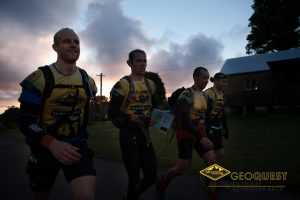
Dawn on day two of the 2013 GeoQuest – short knicks and arm warmers were enough to get us through the night.
In cold weather racing, movement is your friend. Typically, so long as you are moving your body will generate enough heat to stay relatively warm (hence why we shiver). This works well in adventure racing because, in theory, we constantly want to be moving forward on the course. This is particularly important if you get wet out on the course, for example after a river crossing, during a paddle or because of a rain storm. If you can keep moving constantly as a team, you’ll find you can stay relatively warm without needing to get dry.
Compounding our ability to keep on the go and warm in adventure racing is the fact that a fatigued athlete will feel the cold much more than they ever would under normal conditions. I’ve rocked up to a remote hut checkpoint in GODZone with the team wearing every ounce of mandatory clothing – thermals, fleece and waterproofs – only to find the check point volunteer walking around in a t-shirt and shorts. The key difference was that we were on day four of the race with depleted energy reserves and the body finds it much harder to thermoregulate, so the lesson is to keep the fuel sources up and energy as high as possible.
- But if you do have to stop…
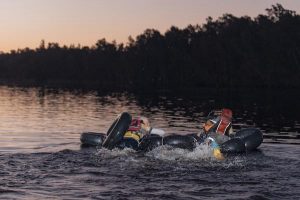
A river crossing on tubes to collect team mates and bikes in the 2012 GeoQuest: have a plan in place to keep warm even for unexpected stops
But if you do have to stop, make sure you have a plan in place to keep warm. When riding at night, I’ve been on teams where we’ve had the rule that if we have to stop, we do it climbing half way up a hill. This has the dual advantage that you get a small rest on the climb along with the fact that when you get going again you will be generating heat through the effort or riding, as opposed to bombing down a hill and freezing with the wind chill. If waiting for a team mate to take a nature break, have a jacket handy that you can throw on backwards while crouching down: this will keep your arms warm and you can throw the jacket over your legs to keep them covered without having to take your pack, race bib and helmet off, making it a quick and simple job to get going again. Again, keeping on the move is your best bet to staying warm on the course, but there is one situation unique to adventure racing where you have to stop: the transition area.
- Don’t over dress in transition areas.
Transition areas can be a real trap for cold and fatigued adventure racers. Caring support crew, a warm fire or car heater, other teams to share in your misery: there are plenty of incentives to over stay your time in transition areas. There is also a temptation to layer up with every bit of clothing in your wardrobe, particularly as you’ll start to feel the cold much more when you’ve stopped. My advice though is to not over do it with the clothing as you will find that after starting the next leg you will have to stop 500m up the road to start shedding all those layers as you over heat. A better idea is to have a large towel or even a blanket on hand to throw over your shoulders while you get the jobs that need to be done in transition. You can then shed this towel or blanket at the last second and get moving to keep warm.
Another relevant meme related to transition areas and staying warm is hot food. It’s pretty obvious, but teams should plan with the their support crews in a race like GeoQuest to have some hot food available in the transition areas, particularly in TAs where they expect to be seeing their crew at night. This can make a massive difference to cold racers. In unsupported races, having a thermos of hot water or soup can also be a fantastic little cherry to aim for during a long, cold race.
- My two favourite pieces of kit
My two favourite pieces of kit in adventure racing are a simple set of arm warmers and a buff. It’s amazing how much difference in warmth you can generate with just these two items. The massive advantage of each is that if and when you start to overheat, they can be removed aside without missing a step, pedal spin or barely a paddle stroke. While wearing a PFD, pulling a buff and arm warmers (along with leg warmers) up and down is a simple job as opposed to trying to remove a thermal top. Same goes when wearing a race bib and pack on the bike and trek legs. I go as far as to use two buffs in particularly cold races: one for the top half and one for the bottom half of my head. Again, it’s amazing the difference pulling a buff down over your ears and up over your mouth and nose can make in cold temperatures and wind chill, all while not even needing to remove your helmet. And it has the added advantage of looking like a bad ass.
Personally I’m a big fan of the arm warmers and buff sold by past Rogue24 Raid sponsors ARea51 – they come with me to every race. Now while arm warmers and buffs are perfect for quickly thermoregulating while on the go during an adventure race, sometimes you just have to take a waterproof jacket or fleece off or you’ll simply overheat. On first appearances it would seem this is not possible to do without stopping to remove your pack and race bib, but there is an alternative.
- Stripping down on the move.
There is no denying that wearing a race bib (and a pack) can be a real pain when it comes to removing layers. I’ve been in multiple situations where the team has had to stop while one member strips down a layer only to have to stop again five minutes up the road to repeat the exercise for another team mate. Obviously communication is key to good team work and saving time in these situations. I also get very frustrated any time I see a racer with a jacket over their race bib outside of transition areas. It clearly states in the rules of every race I’ve done that a bib must be the outer most garment, so don’t be a cheat through either laziness or trying to gain an advantage by not slowing down to remove a bib first. However there is a way to strip down, and even layer up, during a race without removing your race bib.
To remove or add a jacket on the go, firstly remove a single arm from each arm hole in your bib so that you are eventually wearing the bib like a necklace. This is can be done much more easily if you can hand off your pack off to a team mate, but can still be managed with a pack on by just removing one arm at a time from the pack strap. The advantage of not completely removing the bib is that you don’t have to negotiate any hats, headlamps or helmets, and you don’t have to hold onto it while managing the other layers. It is then just a simple job of removing the jacket as required, stuffing it down the side of your pack and popping your arms back through the bib. With a bit of practice you can do this without stopping or even slowing down much (photo to come). My ultimate goal is to pull this maneuver off while riding on the bike, but the chance hasn’t arisen yet.
- Stay dry
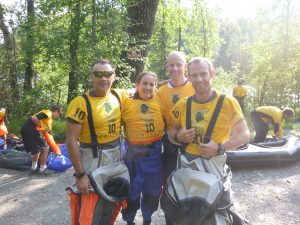
Keeping your lower body warm during a cold paddle can be critical. Dry suits are at one of the extreme.
My final bit of advice on keeping warm during an adventure race is another pretty obvious one and that is staying dry. Nothing will freeze a fatigued athlete more than being wet. Most relevant to racers are the kayak legs (particularly those done at night) and being wet from the waist down. If you are racing at GeoQuest with a sea kayak, having a skirt on works wonders. My happiest moments in a race have been paddling under the stars, toasty and warm and off my feet in a Mirage sea kayak with the skirt on. Now that I race with a ski I make sure to wear neoprene knicks when paddling and have seal skin socks on hand if it’s going to be particularly cold. If you are the front paddler, being splashed on the back can be a real problem. To combat this, I’ve seen team mates wear their waterproof jacket with just the hood on and arms out of the sleeves so that the jacket just hangs down their back. That way their back stays dry but they don’t overheat. And again, I’ll reiterate the danger time is when you stop paddling at the end of a leg or punching a check point, so have a plan in place to keep moving, keep fueled and keep warm.
These are just a few simple and obvious tips to keep warm during an adventure race. Through adequate preparation, appropriate gear and a bit of planning and common sense, no team should ever have to DNF because of risk of hypothermia. Indeed, racing in the cold can generate some of the greatest “type 2” fun moments of race with stories that you’ll reflect back on long after you’re back home snuggled under a blanket next to the fire.

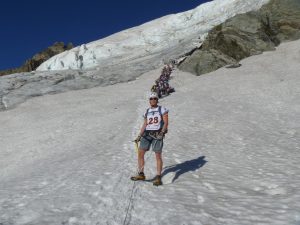
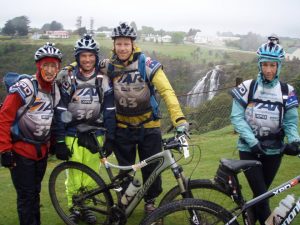
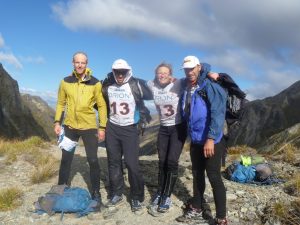
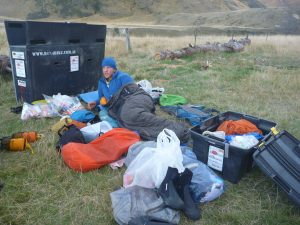

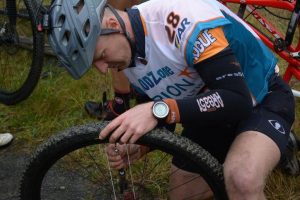
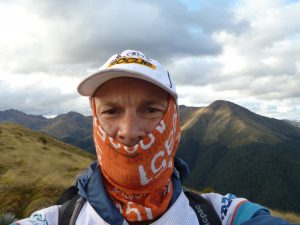
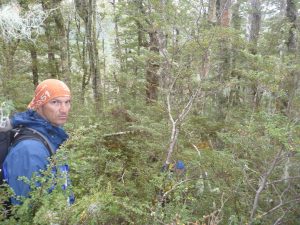

Comments are closed.